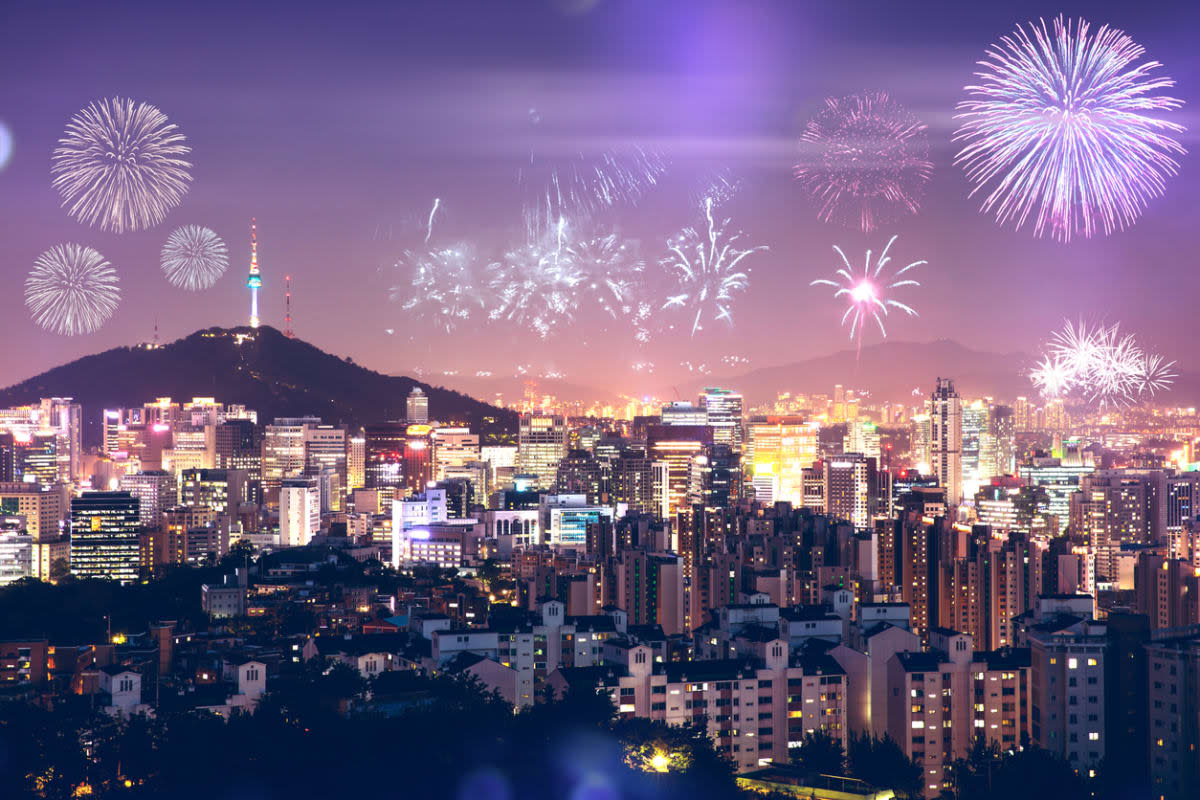What Is Korean New Year? Everything To Know About Seollal

Learn all about Seollal, a Korean holiday that's all about family and heritage.
New Year's celebrations vary throughout the world. Some celebrate the new year on January 1. Others take place later in the month—like Chinese New Year and Korean New Year. But what is Korean New Year, exactly?
Korea (a word meaning “Land of High Mountains and Sparkling Streams”) is situated on a peninsula in the Pacific Ocean, and forms a nearly complete land bridge between Chinese Manchuria and Japan. In addition to the mainland, Korea includes more than three thousand smaller islands. Its history is as rich and varied as its geography, its culture, and its people. Since 1945, it has been divided into two countries, North and South Korea.
South Korea, in particular, provides consumers around the world with oil, automobiles, smartphones and other technology. It’s home to popular K-pop groups, like BTS and Blackpink. Korea’s gifts to international cuisine include Kimchi, ramen noodles, barbecue and Soju (distilled rice liquor).
Culturally, they are known for being family-oriented and are very proud of their country. And on the day of Seollal, or Korean New Year, Koreans around the world gather together to celebrate their heritage.
What is Korean New Year?
Koreans will celebrate Seollal, a holiday lasting three days (including the day before and the day after their New Year’s Day) this winter. It’s a festive occasion when Koreans take time to remember their heritage. If possible, they return to their hometowns to visit their parents and other relatives. With over seven million Koreans living abroad, travel to their mother country may not be possible, but there are still plenty of ways to celebrate this holiday. Both South Korea and North Korea observe this holiday.
At some point during the celebration, men and women, often donning traditional dress purchased just for the occasion, bow to their elders, a kind of bowing known as sebae. While bowing, they say “Sae hae mahnee badeuseyo,” which means: "Please receive many new year blessings.” In return, elders might give some cash to young bowers, which is placed in a pouch called bok jumoni.
One food staple at Seollal is tteokguk (rice cake soup). There was a time tteokguk was only served once a year, for this holiday, as it was believed that by eating it, you become a year older. The jesa table (a high dining table used for ceremonial purposes) might also include an assortment of jeon-fried, savory pancakes filled with vegetables, meats or seafood. Other menu items include mung bean pancakes, Korean BBQ, kimchi dumplings, Korean dumpling soup, glass noodle stir fry and sweet rice bars.
Participants also play yut nori (often shortened to “yoot”), a game that’s been around for centuries. It’s made up of four wooden sticks and a board, where each player throws sticks in the air and advances depending on how they land. It’s comparable to the board game, “Sorry.” This might be the only time of the year a family plays this particular game.
Related: How To Make the Squid Game Honeycomb Recipe (Dalgona Candy)
When is Korean New Year?
Korean New Year occurs sometime in January or February, depending on the year. In 2023, it will be celebrated on January 22—although the celebrations also include January 21 and January 23.
How long is the Korean New Year Celebration?
Korean New Year celebrations usually last three days.
Is January 1 a New Year in Korea?
In addition to their observance of the Korean New Year, many Koreans also observe the Western New Year, based on our Gregorian calendar) on January 1.
How many New Year celebrations does Korea observe?
While South Korea may also celebrate the Western New Year, there's one more New Year celebration observed in North Korea.
In North Korea, they have a third New Year’s celebration, based on the Juche ideology, and its calendar. The Juche calendar begins with the birthday of North Korea’s founder, Kim II-sung.
Related: 25 Authentic Korean Recipes
Why do Koreans celebrate Lunar New Year?
Technically, Koreans celebrate their new year based on the lunisolar calendar, tracking both the moon and the sun. Depending on the sun’s position, and the phases of the moon, days and even months can vary. This calendar system was developed by agrarian societies, and continues to be used in certain countries today. Although Koreans primarily use the Gregorian calendar (like those in the West) today, they utilize this ancient calendar to determine the date of national holidays.
Is Korean New Year the same as Chinese New Year?
The two holidays are not the same, although they typically occur at the same time.
Next up, Eric Kim's Easy Pork Chops Take a Flavor-Bomb Cue From Korean Cuisine

